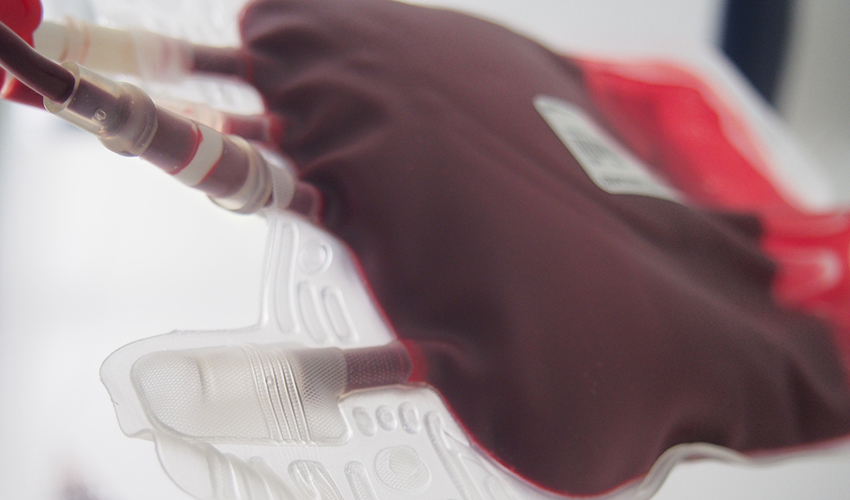
At a glance:
- Billions of people live in “blood deserts,” areas in which the clinical need for blood components cannot be met in at least 75 percent of cases.
- Health systems can take immediate steps to improve access to blood until longer-term strategies are established, according to a report from a new global coalition led by Harvard Medical School researchers at Brigham and Women’s Hospital.
A new global collaborative aims to address extreme blood unavailability in rural settings.
Leaders of the collaborative — named the Blood D.E.S.E.R.T. Coalition and spearheaded by researchers from Brigham and Women’s Hospital and Harvard Medical School — published their recommendations Feb. 14 in Lancet Global Health.
Billions of people live in parts of the world that are so remote from the nearest hospital facility with a functioning blood bank that they are termed “blood deserts.”
The paper, which summarizes the conclusions of health and medicine experts from around the globe, outlines several interventions that health care professionals and governments can implement in the short term to significantly increase global access to blood transfusions — improving care while leaders develop long-term solutions.
“As a trauma surgeon in Boston, I cannot fathom not having blood for our patients when they arrive after major injury. Unfortunately, this is the reality in most of the world, and people die unnecessary deaths,” said coalition founding director and study co-first author Nakul Raykar, HMS assistant professor of surgery and a trauma surgeon at Brigham and Women’s.
“It will take decades to build and fund enough functional blood banks to meet the world’s needs,” said Raykar. “But we do not need to wait. Immediate, low-cost solutions already exist that could be implemented today.”
The scope of the blood shortage problem
Blood products are a critical part not only of surgical and trauma care but also of a wide range of medical treatments. For example, people with hemophilia require transfusions of clotting factors that are purified from donor blood, and blood products are used for obstetrics complications such as postpartum hemorrhage, miscarriage, and ectopic pregnancy.
According to Raykar, lack of blood is a major reason so many people die after trauma in low- and middle-income countries (LMICs) — as high as 50 to 60 percent according to some studies — compared to the 1 to 2 percent mortality rates after trauma seen in developed trauma systems in high-income countries like the United States.
Access to blood in rural areas is affected by several factors, including a lack of blood itself, high costs, and long distances between the point of care and whatever blood supply is available.
Due to one or more of these factors, the majority of the world’s people live in blood deserts, where the clinical need for blood components cannot be met in at least 75 percent of cases.
Every country in sub-Saharan Africa and South Asia has a significant blood shortage, and as a result, more than half of the global population doesn’t have access to basic, life-preserving medical care, said Raykar, who is also a faculty leader in the Program in Global Surgery and Social Change at HMS.
“A huge proportion of the challenges facing health care providers in these areas is accentuated by this single missing resource,” he said.
Blood shortages are not unique to LMICs. The American Red Cross recently declared an emergency blood shortage for the U.S. as the number of blood donors dropped to the lowest it had been in 20 years. However, the problem is exacerbated in settings where the only hospitals with stocked blood banks are in urban centers that are hours away.
Researchers estimate that 40 percent of annual blood donations are collected in high-income countries, which serve just 16 percent of the world’s population — leaving most of the world underserved.
Proposed short-term solutions
The Blood D.E.S.E.R.T Coalition, which stands for Delivery via Emerging Strategies for Emergency Remote Transfusion, conducted a three-month series of video conference and live workshops with participants in 11 countries. The coalition identified urgent research, policy, and implementation priorities for health systems to improve access to blood in the near future.
The solutions they proposed include:
- Civilian walking blood banks, a military strategy being adapted to civilian contexts in which volunteers within communities are ready and able to give blood at short notice so rural areas don’t have to rely solely on central storage.
- Intraoperative auto-transfusion, in which a patient’s own blood is recirculated during medical procedures.
- Drone-based delivery. This would require a bigger investment to safely implement compared to the other strategies and is unlikely to be a sufficient solution, but drones could play an important part in a comprehensive strategy, the authors note.
These solutions cannot replace a safe supply of banked, laboratory-screened blood that is available on short notice because they each have logistical drawbacks, said Raykar.
“However, in areas where no other blood is available, any solution that gets blood to the people that need it should be a priority,” he said. “And these strategies are already quite literally battle-tested for implementation.”
The idea is to combine strategies to create a short-term system to support blood deserts while leaders work to create longer-term, sustainable solutions to the global blood crisis, Raykar said.
“The recommendations we’ve outlined are a strong step in the right direction, but there’s a lot more that needs to be done.”
The coalition’s mission is to establish the research, education, and implementation agenda needed to eliminate the world’s blood deserts. Leadership extends across 17 institutions in 10 countries.
Funding, authorship, disclosures
Raykar is co-first author with Vanitha Raguveer, a former research collaborator in the HMS Program in Global Surgery and Social Change. Additional authors are Yetmgeta Eyayou Abdella, Asma Ali-Awadh, Harshit Arora, Lucy Asamoah-Akuoko, Linda S. Barnes, Andrew P Cap, Aulina Chowdhury, Zara Cooper, Meghan Delaney, Marisa DelSignore, Sidra Inam, Vijay Anand Ismavel, Kennedy Jensen, Nikathan Kumar, Gilchrist Lokoel, Joy John Mammen, Priyansh Nathani, Marie Paul Nisingizwe, Juan Carlos Puyana, Robert Riviello, Nobhojit Roy, Ali Salim, Claude Tayou-Tagny, Sargun Virk, and Caroline Wesonga Wangamati.
This research was supported by grants from the Harvard Radcliffe Institute for Advanced Study and the Gillian M. Reny Stepping Strong Center for Trauma Innovation at Brigham and Women’s.





